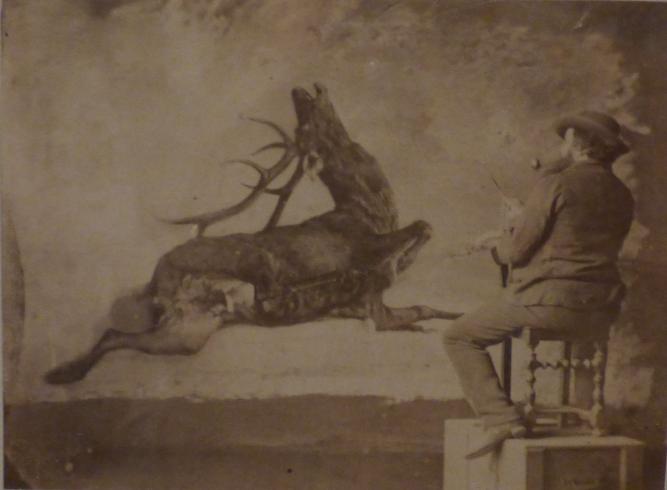Etienne Carjat (1828-1906) was firstly a cartoonist and lithographer, then a photographer, playwright and journalist. He was introduced to photography by Pierre Petit and opened his first professional studio around 1855, specialising in portraiture. His work is characterised by the absence of the use of accessories and decorative items: the photographer preferred to compose his portraits in a tight frame, concentrating on the essentials.
It was in Frankfurt, at the home of the painter Victor Müller, that Gustave Courbet (1819-1877) met Etienne Carjat in 1859. Carjat earned his living by sketching tourists in Baden-Baden, and Courbet taught in Frankfurt. The two men got on well very quickly and a keen friendship developed between them. Courbet enjoyed being photographed by Carjat in different poses and costumes, ranging from a bourgeois gentleman in a frock coat to an artist at work. More than ten portraits like this were taken during the 1860s, which highlights Courbet’s interest in his own image.
Here Carjat photographed him when he was painting his last large-format work titled The Kill of the Deer, and which caused a scandal. The hunting scene, worthy of a historical painting, is still only in sketch form, but is already disturbing. With the deer still in its death throes, the painter seems to be staring at the animal rather than painting it.
S. G. C.

City of Paris municipal collection's website
The collections portal can be used to search the collections of Paris’s 14 municipal museums (approximately 336,000 works, including 43,000 belonging to the Petit Palais).
It is also possible to download around 12,000 images of the museum’s works free of charge.
Access the Museums of the City of Paris collections portal
Extern databases
Discover a selection of databases online presenting works from the Petit Palais or documents concerning the history of the museum.

